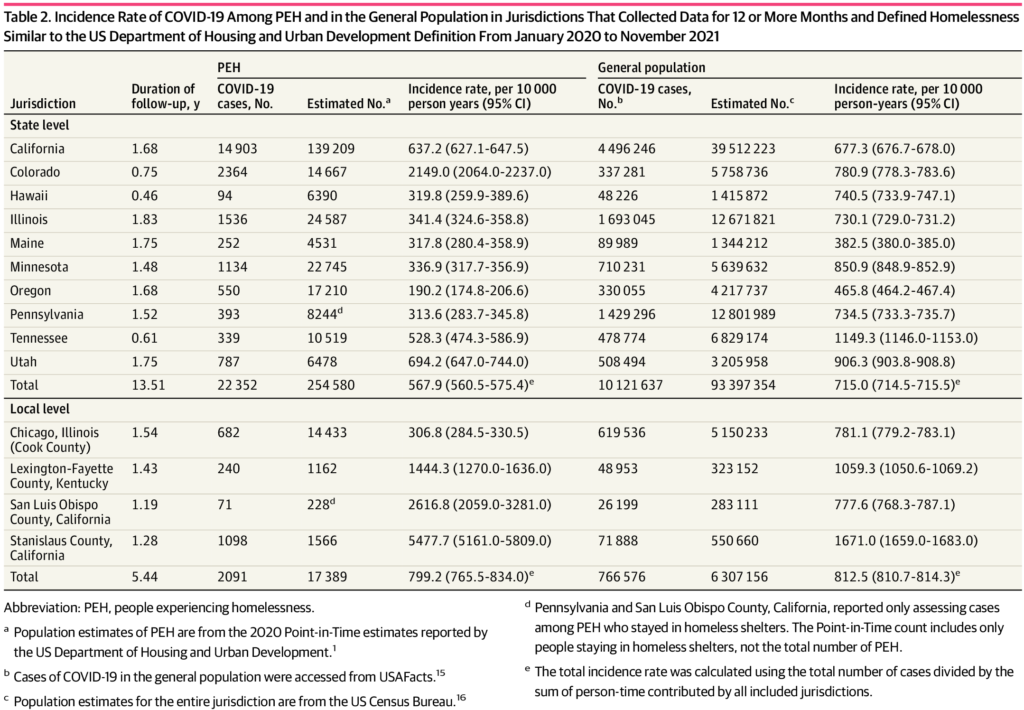Link: https://jamanetwork.com/journals/jamanetworkopen/fullarticle/2795298
Graphic:

JAMA Netw Open. 2022;5(8):e2227248. doi:10.1001/jamanetworkopen.2022.27248
Excerpt:
Question How many cases of COVID-19 in the US have occurred among people experiencing homelessness?
Findings In this cross-sectional study of 64 US jurisdictional health departments, 26 349 cases of COVID-19 among people experiencing homelessness were reported at the state level and 20 487 at the local level. The annual incidence rate of COVID-19 was lower among people experiencing homelessness than in the general population at state and local levels.
Meaning The findings suggest that incorporating housing and homelessness status in infectious disease surveillance may improve understanding of the burden of infectious diseases among disproportionately affected groups and aid public health decision-making.
Author(s): Ashley A. Meehan, MPH1; Isabel Thomas, MPH1,2; Libby Horter, MPH1,3; et al
Publication Date: August 18, 2022
Publication Site: JAMA Open Network






